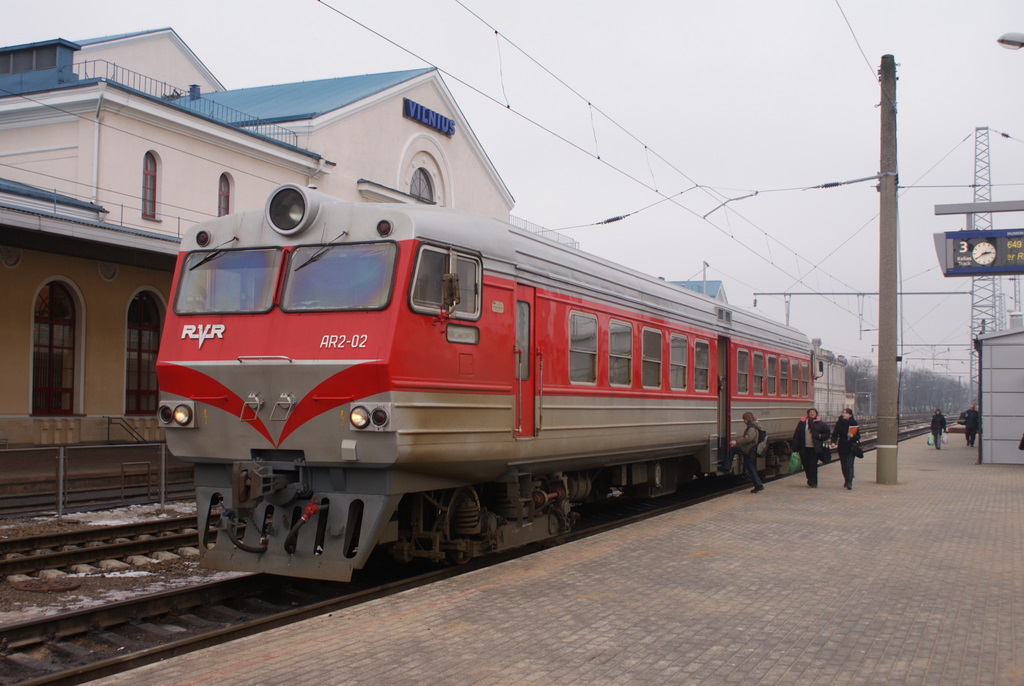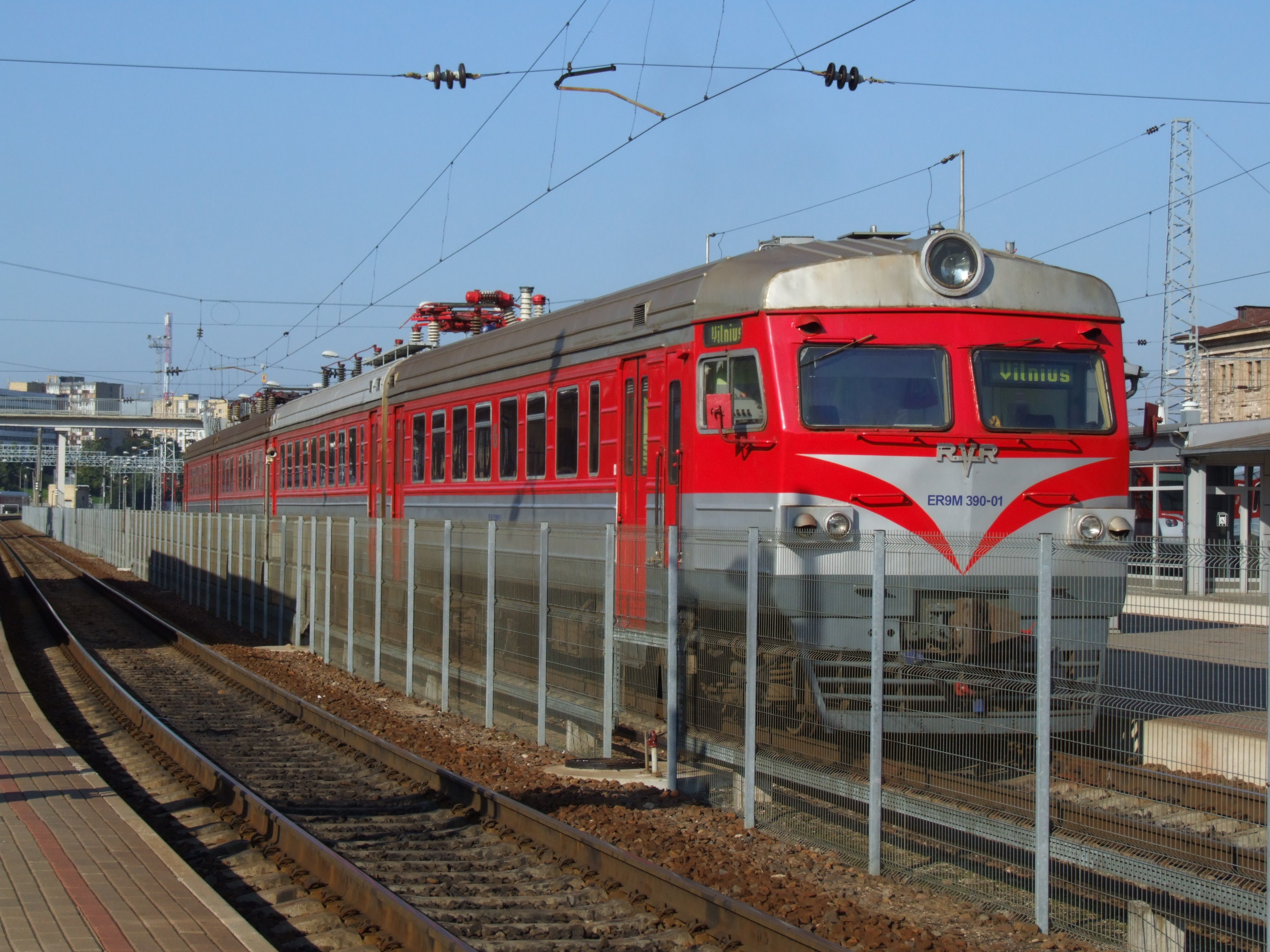Rīgas Vagonbūves Rūpnīca on:
[Wikipedia]
[Google]
[Amazon]





 Rīgas Vagonbūves Rūpnīca (RVR) was a
Rīgas Vagonbūves Rūpnīca (RVR) was a
Severstallat
/ref> Expropriated by the state following the takeover of Latvia by the
Official website of RVR
{{Authority control 1895 establishments in the Russian Empire Companies based in Riga Manufacturing companies of the Soviet Union Rolling stock manufacturers of Latvia Tram manufacturers Companies nationalised by the Soviet Union Latvian brands Ministry of Heavy and Transport Machine-Building (Soviet Union) Electric vehicle manufacturers of Latvia
 Rīgas Vagonbūves Rūpnīca (RVR) was a
Rīgas Vagonbūves Rūpnīca (RVR) was a Latvia
Latvia ( or ; lv, Latvija ; ltg, Latveja; liv, Leţmō), officially the Republic of Latvia ( lv, Latvijas Republika, links=no, ltg, Latvejas Republika, links=no, liv, Leţmō Vabāmō, links=no), is a country in the Baltic region of ...
n rail and tram vehicle manufacturer, most notable for its multiple unit
A multiple-unit train or simply multiple unit (MU) is a self-propelled train composed of one or more carriages joined together, which when coupled to another multiple unit can be controlled by a single driver, with multiple-unit train cont ...
trains and tram
A tram (called a streetcar or trolley in North America) is a rail vehicle that travels on tramway tracks on public urban streets; some include segments on segregated right-of-way. The tramlines or networks operated as public transport ...
vehicles used throughout the Soviet Union
The Soviet Union,. officially the Union of Soviet Socialist Republics. (USSR),. was a transcontinental country that spanned much of Eurasia from 1922 to 1991. A flagship communist state, it was nominally a federal union of fifteen nationa ...
and its successor states. It has been insolvent and non-operational since 2017.
History
The original works were founded in 1895 by the businessman Oscar Freywirth under the name Fēnikss. In 1936, Fenikss was reorganised into Joint Stock Company Vairogs, which later manufacturedFord-Vairogs
Ford-Vairogs ("Vairogs" meaning "Shield") (earlier called "Fenikss") was the name of a car factory in Riga, Latvia, that produced license built Ford cars between September 1937 and 1940 when it was expropriated as the property of the Soviet go ...
automobiles under licence./ref> Expropriated by the state following the takeover of Latvia by the
Soviet Union
The Soviet Union,. officially the Union of Soviet Socialist Republics. (USSR),. was a transcontinental country that spanned much of Eurasia from 1922 to 1991. A flagship communist state, it was nominally a federal union of fifteen nationa ...
and renamed RVR, it became for many years the largest producer of electric
Electricity is the set of physical phenomena associated with the presence and motion of matter that has a property of electric charge. Electricity is related to magnetism, both being part of the phenomenon of electromagnetism, as described by ...
and diesel trains in the USSR and also produced tramcars
A tram (called a streetcar or trolley in North America) is a rail vehicle that travels on tramway tracks on public urban streets; some include segments on segregated right-of-way. The tramlines or networks operated as public transport ar ...
. Its best known products are the ER1, ER2, ER7, ER9 and ER31 electric trains
In rail transport, a train (from Old French , from Latin , "to pull, to draw") is a series of connected vehicles that run along a railway track and transport people or freight. Trains are typically pulled or pushed by locomotives (often know ...
, DR1, DR1A and DR1P diesel trains
In rail transport, a train (from Old French , from Latin , "to pull, to draw") is a series of connected vehicles that run along a railway track and transport people or freight. Trains are typically pulled or pushed by locomotives (often know ...
, many of which are still in service today. Between 1973 and 1988 it built the high-speed ER200 train
In rail transport, a train (from Old French , from Latin , "to pull, to draw") is a series of connected vehicles that run along a railway track and transport people or freight. Trains are typically pulled or pushed by locomotives (often ...
. Following the collapse of the Soviet Union and the Comecon
The Council for Mutual Economic Assistance (, ; English abbreviation COMECON, CMEA, CEMA, or CAME) was an economic organization from 1949 to 1991 under the leadership of the Soviet Union that comprised the countries of the Eastern Bloc#List of s ...
, the factory ceased operations in 1996 and was declared bankrupt in 1998. Part of the property was bought by Severstal
Severstal (russian: Северсталь, , Northern Steel) is a Russian company mainly operating in the steel and mining industry, headquartered in Cherepovets. Severstal is listed on the Moscow Exchange and LSE and is the largest steel compan ...
, a company controlled by Russian oligarch Alexey Mordashov
Alexey Alexandrovich Mordashov ( rus, Алексей Александрович Мордашов; born 26 September 1965) is a Russian billionaire businessman. He is the main shareholder and chairman of Severstal, Russia's largest steel and mini ...
. In 2001 the factory was bought by a holding company
A holding company is a company whose primary business is holding a controlling interest in the securities of other companies. A holding company usually does not produce goods or services itself. Its purpose is to own shares of other companies ...
and continued sales were primarily orders for the refurbishment of units it had previously manufactured. After its ownership structure changed several times it entered insolvency in 2017, following a dearth of orders for new vehicles for several years and several failed attempts at partnerships with other rail manufacturers.
Products
Trains
*AR-1 first produced 1969 *AR-2 first produced 1997 *DR-1 / DR-1P / DR-1A / DR-1B beginning in 1963 *ER-1 first produced 1957 *ER-2 / ER-2R / ER-2T beginning in 1962 *ER-3 produced 1963 *ER-6 prototype only in 1965 *ER-7 first produced 1957 *ER-9 / ER-9P / ER-9M / ER-9E / ER-9ET / ER-9T first produced 1962 *ER-10 first produced 1960 *ER-11 produced 1965 *ER-12 first produced 1976 *Er-200 first produced 1974Trams
From 1923 to 1930 the factory produced some 40 tram cars for Riga. AfterWorld War II
World War II or the Second World War, often abbreviated as WWII or WW2, was a world war that lasted from 1939 to 1945. It involved the World War II by country, vast majority of the world's countries—including all of the great power ...
, in 1949 the factory started producing the MTV-82 tram. Between 1960 and 1989 more than 6000 RVR-6 tram cars were built.
Current operators
Many RVR trains built during the Soviet period are still in active service across the formerUSSR
The Soviet Union,. officially the Union of Soviet Socialist Republics. (USSR),. was a transcontinental country that spanned much of Eurasia from 1922 to 1991. A flagship communist state, it was nominally a federal union of fifteen nati ...
. Current operators are shown below. Very few, if any, RVR tramcars are still in operation, with most cities of the former USSR favouring tramcars built by ČKD Tatra
ČKD (Českomoravská Kolben-Daněk) () was one of the largest engineering companies in the former Czechoslovakia and today's Czech Republic. It is famous for the Tatra T3, a tramcar that sold 13,991 units worldwide.
History
ČKD was formed ...
.
See also
* Electric multiple units of Russia atWikimedia Commons
Wikimedia Commons (or simply Commons) is a media repository of free-to-use images, sounds, videos and other media. It is a project of the Wikimedia Foundation.
Files from Wikimedia Commons can be used across all of the Wikimedia projects in ...
References
External links
Official website of RVR
{{Authority control 1895 establishments in the Russian Empire Companies based in Riga Manufacturing companies of the Soviet Union Rolling stock manufacturers of Latvia Tram manufacturers Companies nationalised by the Soviet Union Latvian brands Ministry of Heavy and Transport Machine-Building (Soviet Union) Electric vehicle manufacturers of Latvia